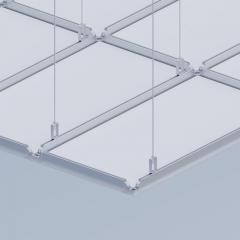
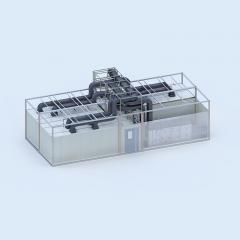
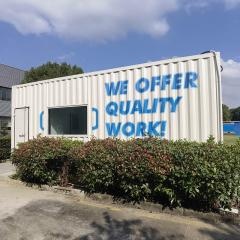
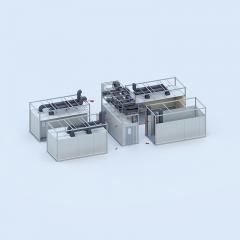
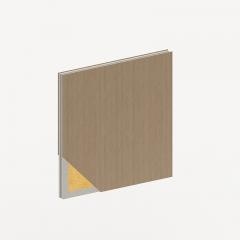
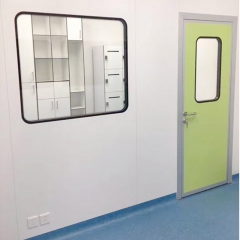
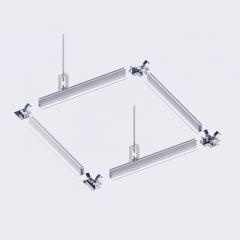
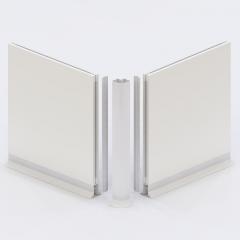
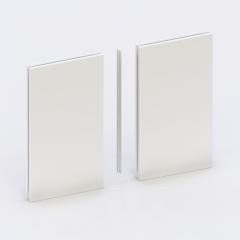

Many people assume that once a cleanroom is built, the job is done. In reality, what determines success or failure over time is what happens afterward. Cleanroom maintenance is not basic housekeeping—it is a long-term, risk-driven management system built around standards, engineering controls, and operational discipline. As a professional cleanroom engineering provider, Wonclean uses this guide to explain what cleanroom maintenance really means and why it matters. What Is Cleanroom Maintenance—and Why Is It Different from Regular Cleaning? The goal of regular cleaning is simple: make a space look clean. The goal of cleanroom maintenance is very different: maintain continuous environmental control. Key differences include: Different control targets: focus on airborne particles and microorganisms, not visible dirt Standards-driven execution: all actions follow ISO 14644, GMP, USP, and related regulations Higher risk level: improper cleaning can lead to contamination, batch rejection, or regulatory penalties In real-world facilities, cleanroom maintenance functions as an ongoing clean room process, not a one-time task. Where Does Contamination Come From? Based on Wonclean’s project experience, contamination sources fall into four main categories: Primary Contamination Sources Personnel (>80%): skin flakes, hair, oils, respiratory aerosols External introduction: materials, tools, unclean equipment Internal generation: equipment wear, material aging Cleaning itself: shedding wipes, incompatible chemicals This is why training, procedure control, and proper tools are essential parts of any cleanroom program. Core Principles of a Standardized Cleaning SOP A compliant cleanroom maintenance program always starts with a clear and enforceable SOP. Four Golden Rules of Cleanroom Cleaning Top to bottom, clean to dirty Unidirectional movement—no backtracking Clean first, then disinfect (observe required contact time) Dedicated tools by area, with color coding to prevent cross-contamination These principles apply to all cleanroom classes, with increasing strictness at higher grades. A Step-by-Step Cleanroom Cleaning Example Many facility managers ask questions similar to how to clean your room step by step. Below is a typical workflow: Three-Stage Cleaning Process Stage 1: Preparation Personnel complete gowning procedures Approved wipes, disinfectants, and HEPA vacuums are prepared Non-fixed items are removed Stage 2: Execution Ceiling and air diffusers → walls → equipment → work surfaces → floors Overlapping “S-pattern” wiping with frequent wipe folding Floors cleaned dry first, then wet-disinfected Stage 3: Recovery Visual inspection under proper lighting Used materials sealed and removed HVAC recovery time observed and documented This structured approach defines true cleanroom cleaning, not casual sanitation. Beyond Daily Cleaning: How to Plan Maintenance Frequency Effective cleanroom maintenance is layered, not repetitive. Frequency Key Tasks Daily Surfac...
In addition to being suitable for hospitals and clean laboratories, the medical clean board can also be widely used in pharmaceutical factories, food factories, shopping malls, subway tunnels, stadiums, schools and other fields. The medical clean board has superior fire resistance, aging resistance, and water resistance. Sex, can maintain the beautiful appearance for a long time, give people a sense of cleanliness and warmth. The medical clean board market is priced moderately, and has better pollution resistance and weather resistance than traditional paints. Compared with traditional aluminum-plastic panels, its flatness and resistance to deformation are the hallmarks of medical clean boards, and they can be provided by the manufacturer. The color card is used for color customization, so that the designer has more diversified choices when designing. The medical clean board is very simple and comfortable. Compared with stone, it has warmth. There will be no signs of decay and mold, the side will not swell or deform, and will not fade. There are no cracks on the board surface. The medical clean board has great weather resistance and long service life. The wave function is good and will not be bent, deformed, or contracted due to climate changes. Good machining function, the processed plate has many characteristics such as high hardness, strong bending resistance and so on. Excellent fire protection function, the board is non-flammable, the panel will not melt or explode, and it can temporarily maintain the original characteristics. Colorful color and texture, the surface of the board uses inorganic pigments, metallic pigments and pearlescent pigments, and can be made into various colors and various coating appearances with upper, middle and lower gloss. The cost-effectiveness is expected to be high, the use of time is long, the cost of maintenance and overhaul is reduced, the maintenance cost is very low, the processing method is complex and the device is complicated, the construction time is extended, and the efficiency of the task is improved, so it has a very high cost performance. Committed to pharmaceutical clean room doors、cleanroom wall panel and hpl false ceiling etc.
Modular design reduces processing time, Shorten the delivery time, and the assembly is simple, convenient and fast. Modular design, easy design changes The FFU ceiling grid is highly expandable and can be changed according to the special FFU size Completely cut and processed in the factory, Only perform assembly actions in a clean room Reduce pollution during construction. Aluminum alloy surface sealing treatment, beautiful appearance. T-Bar bottom suspension ditch It can be decorated with PVC cover to prevent particles from accumulating. Standard nuts (3/8", 17 heads) can be used for both the upper and lower grooves of T-Bar For suspension use, reduce the use of special screws to avoid cost increase. The bottom of the FFU keel T-Bar can be installed with special lamps for clean rooms. The special bump design of T-Bar and Joint utilizes the weight of FFU, The FFU keel enhances the airtight effect of forced tightening and reduces the loss of air volume. Joint's multi-lifting point design prevents the problem of incapable suspension due to interference of the lifting points. The Joint forms a hole, which can be installed with a fire sprinkler (through 6/8" seamless steel pipe). Fire smoke detectors can be installed at the bottom of the Joint. Welcome to inquiry clean room FFU 、cleanroom wall systems and clean room modular wall systems etc.
PUR and PIR refer to the chemical composition and structure of rigid polyurethane foam. Either PUR or PIR can be used as a core material and a variety of rigid or flexible materials as the surface material to be composited by various processing methods. PUR composite panel refers to the polyurethane rigid foam as the core material, which generally adopts a formula system of polyether polyol, lower isocyanate index and flame retardant. The skeleton structure of the foam is composed of urethane segments. It can only be used below 100 degrees Celsius. PIR composite panel refers to the polyurethane rigid foam as the core material, which generally uses polyester polyol, high isocyanate index (above 250), and uses no or less flame retardant formula system. The skeleton structure of the foam is made of urethane The product is composed of the chain segment and the urethane modified isocyanurate segment together, and the product can be used below 150 degrees Celsius. In today's industrial system, there is an increasing demand for PIR polyurethane panels. Recently, many customers are looking for PIR polyurethane cold storage board, so what is PIR polyurethane cold storage board? Talk to everyone today. The so-called PIR polyurethane cold storage board means that the combustion grade of the polyurethane sandwich panel reaches the B1 level. When it comes to fire rating, I have to mention the old standard GB8624-1997. This is an earlier standard for building fire protection materials. This is described in the standard: Class A: Non-combustible materials (such as rock wool, stone, etc.) Class B1: Flame-retardant materials (such as: polyurethane, polystyrene) Class B2: combustible materials (polyurethane, polystyrene) Class B3: Flammable materials (extruded polystyrene, polyurethane, etc.) Polyurethane is found in B1, B2, and B3 materials. Back to the topic, polyurethane cold storage board, as a better insulation material today, has been widely used in the construction of cold storage in our production and life. Polyurethane materials are materials for agricultural production systems. Only inorganic materials can achieve Class A non-combustibility. We have already mentioned this in previous exchanges. Therefore, the higher combustion level of polyurethane materials can reach B1 level. Question:What is clean room panels made of? Answer:Clean room panel, also known as clean board, is a composite board with color-coated board, stainless steel and other materials as the surface material.
Features of clean room FFU ceiling gird system: 1. Modular design reduces processing time, shortens delivery time, and makes assembly simple, convenient and fast. 2. Modular design, easy to design changes, large expandability, can be changed according to the special FFU size 3. Cut and process in the factory, and only do assembly actions in the clean room to reduce pollution during construction. 4. The aluminum alloy surface is sealed, and the appearance is beautiful. 5. The suspension ditch at the bottom of T and Bar can be modified with PVC cover to prevent particles from accumulating. 6. Both T and Bar upper and lower grooves can use standard nuts (3/8¨, 17 heads) for suspension, reducing the use of special screws to avoid cost increases. 7. Special lamps for clean rooms can be installed at the bottom of T and Bar. 8. The special bump design of T, Bar and Joint utilizes the weight of FFU to increase the airtight effect of forced tightening and reduce the loss of air volume. 9. Joint multi-lifting point design to prevent the problem of incapable suspension due to interference of the lifting points. 10.Joint forms a hole, which can be installed with a fire sprinkler (through 6/8¨ seamless steel pipe). 11. Fire smoke detectors can be installed at the bottom of the Joint. Related questions: Why is clean room is importance for pharmaceutical industry? Answer:Ensure the establishment of a scientific and strict sterile pharmaceutical production environment, process, operation and management system. Eliminate biological bacteria and produce high-quality and safe pharmaceutical products. If one link is not well controlled, no matter how good the production process is, no matter how good It is also difficult to ensure the quality of drugs
Through certain technical means, remove particles, bacteria, viruses, harmful gases and other pollutants in the air within a certain range, and at the same time, control the cleanliness, temperature, humidity, air pressure, wind speed, noise, and lighting parameters in the area Within a certain range of requirements. This project is called the purification project. This room is a clean room. The clean room originated in a hospital. In the 1880s, Lauder List realized that bacteria can cause infections in surgical wounds. Removing bacteria from the operating room can prevent infections, laying the scientific theoretical foundation for clean rooms. The clean room is developed in the precision instrument manufacturing industry. During World War II, people discovered that in order to improve the quality and reliability of guns, tanks, and aircraft equipment, the cleanliness of the production environment must be improved. Therefore, the first clean room for industrial production appeared in the United States. It can be said that the victory of World War II also contributed to the clean room. In the 1850s, the emergence of high-efficiency filters promoted the development of clean rooms. At this stage, clean rooms are widely used in industries such as microelectronics, optoelectronics, medicine, medical treatment, microorganisms, instruments, meters, aerospace, aviation, food, health products, and cosmetics. From our professional point of view, clean rooms are basically ubiquitous. There are many parameters that need to be controlled in the purification project, the most important thing is the number of particles, that is, the control of cleanliness. According to the maximum allowable concentration of particles of different particle sizes in the air, we mainly look at the particle concentration of 0.5 micron and 5 micron to divide the air cleanliness of the clean room into 100, 10,000, and 100,000 grades. Welcome to inquiry demountable wall partitions、clean room sliding doors and cleanroom partition wall etc.